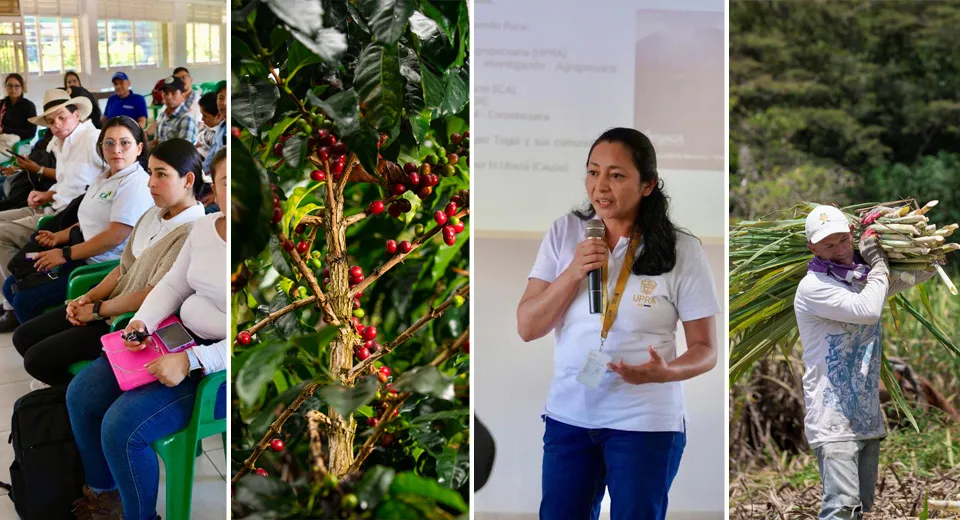 24/9/2024
24/9/2024
Togüí, a Hidden Paradise for agricultural production

The UPRA supports the community in the Paraíso Escondido Peasant Reserve Zone (ZRC) by helping them identify and prioritize agricultural production alternatives and conduct market assessments.
Coffee, sugarcane for panela, dual-purpose livestock, bore, native avocado, and arracacha are among the promising production alternatives in this ZRC.
Togüí (Boyacá), (@UPRAColombia, @dorairey). In November 2023, the Board of Directors of the National Land Agency (ANT) approved the creation and delimitation of the Paraíso Escondido Peasant Reserve Zone (ZRC), located in the municipality of Togüí, Boyacá. This decision benefits more than 400 families across approximately 6,950 hectares, encompassing the hamlets of Carare, Garibay, and Hatillo.
The Agricultural Rural Planning Unit (UPRA) supports the community through participatory workshops aimed at identifying and prioritizing agricultural production alternatives and conducting market assessments. "The community must choose the productive alternatives based on which they will plan their territory in an orderly manner, considering demand and supply criteria, self-consumption, and food autonomy. UPRA identifies the supply through EVA (Land Evaluation), the Agricultural Census, among other inputs. Prioritizing productive alternatives is the starting point for other processes such as aptitude zoning, cost estimation, financial analysis, and planning by entities in the agricultural sector, such as PIDAR, PDEA, and PIDARET,” explained Andrea Ramírez, a UPRA collaborator.
The community had requested the creation of this ZRC more than a decade ago to resist mining activities that threatened to displace them from their land. Now, the farmers prioritize the productive management of the land around water resources. Togüí is considered the "water lung" of the Ricaurte province, and in this ZRC, the sustainable use of natural resources is encouraged, in harmony with agroecological production processes.
“This exercise with UPRA is very important because it allows us to identify productive lines that are linked to our municipality: sugarcane for panela, coffee, and dual-purpose livestock. It also helps us identify other promising products like native avocado, bore, and arracacha,” noted Laura Poveda, a member of the ZRC Impulse Committee.
These workshops strengthen community participation in rural territorial development planning. At the end of the process, UPRA will present a list of prioritized productive alternatives, promising alternatives, and a market assessment.
Paraíso Escondido ZRC Area

What are Peasant Reserve Zones (ZRC)?
Peasant Reserve Zones (ZRC) are geographic areas with agroecological and socioeconomic characteristics that require regulation, limitation, and ordering of property or rural land ownership. These zones are determined by the National Land Agency (ANT) and create conditions for the proper consolidation of the peasant economy. ZRCs are also an instrument for the social ordering of rural property.
Where Are the ZRCs Located?

Objectives of the ZRCs
According to Decree 1777 of 1996, the objectives of the creation and delimitation of ZRCs are as follows:
-
Control the improper expansion of the agricultural frontier.
-
Prevent and correct inequitable concentration or uneconomical fragmentation of rustic property.
-
Create conditions for the proper consolidation and sustainable development of the peasant economy and settlers in the respective zones.
-
Facilitate the comprehensive implementation of rural development policies.
-
Regulate the occupation and use of vacant land, giving preference in its adjudication to resource-poor peasants or settlers.
-
Create and build an integrated proposal for sustainable human development, territorial planning, and political management.
-
Strengthen spaces for social, political, environmental, and cultural dialogue between the State and rural communities, ensuring their participation in planning and decision-making at both local and regional levels.

